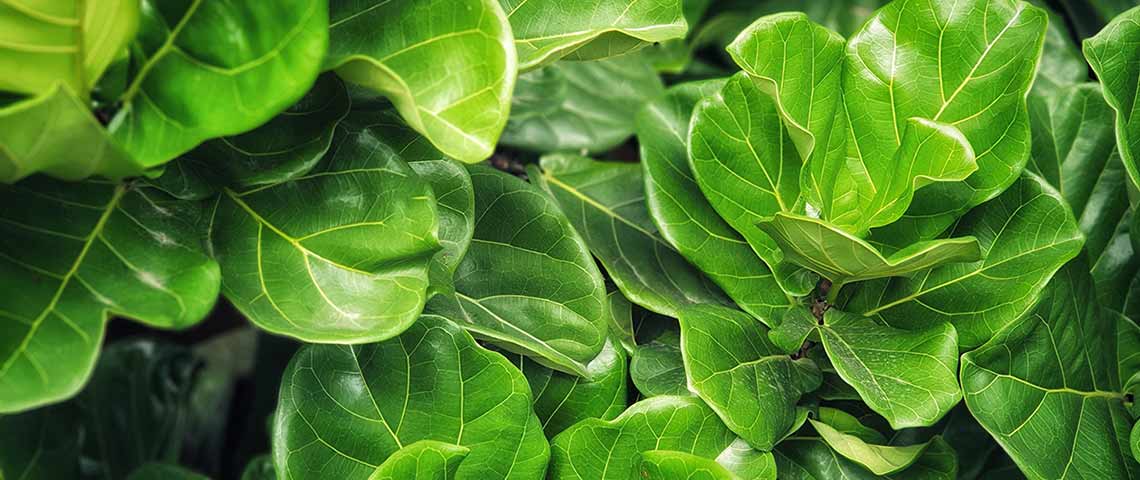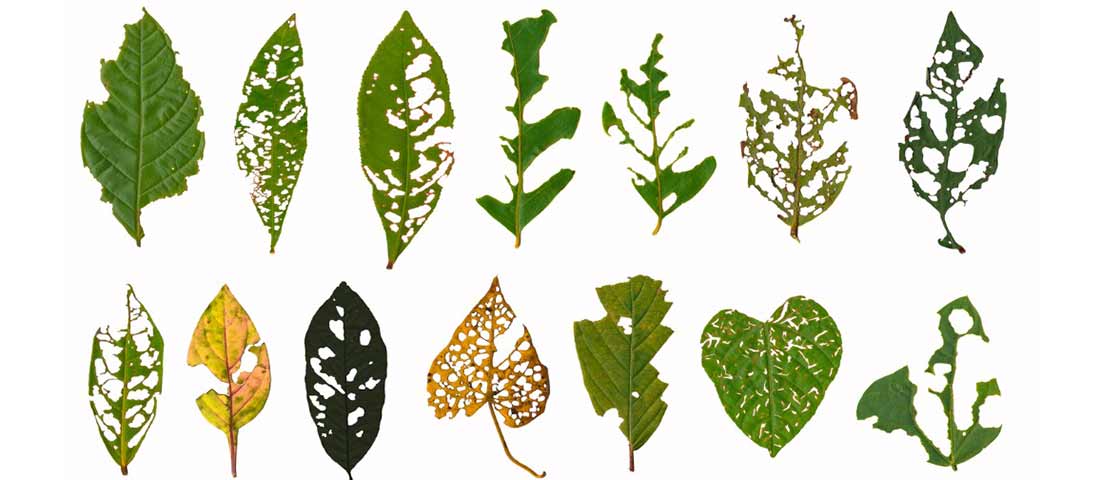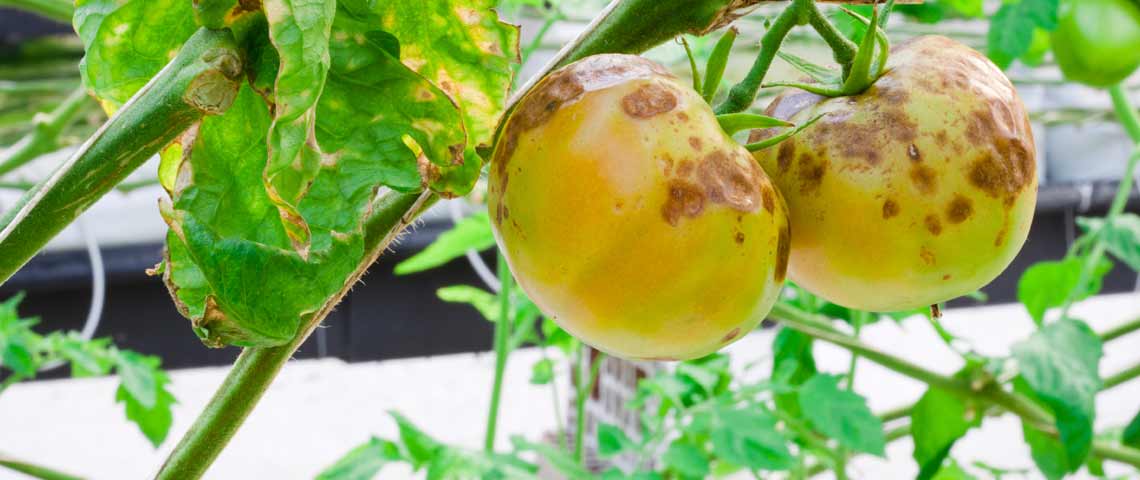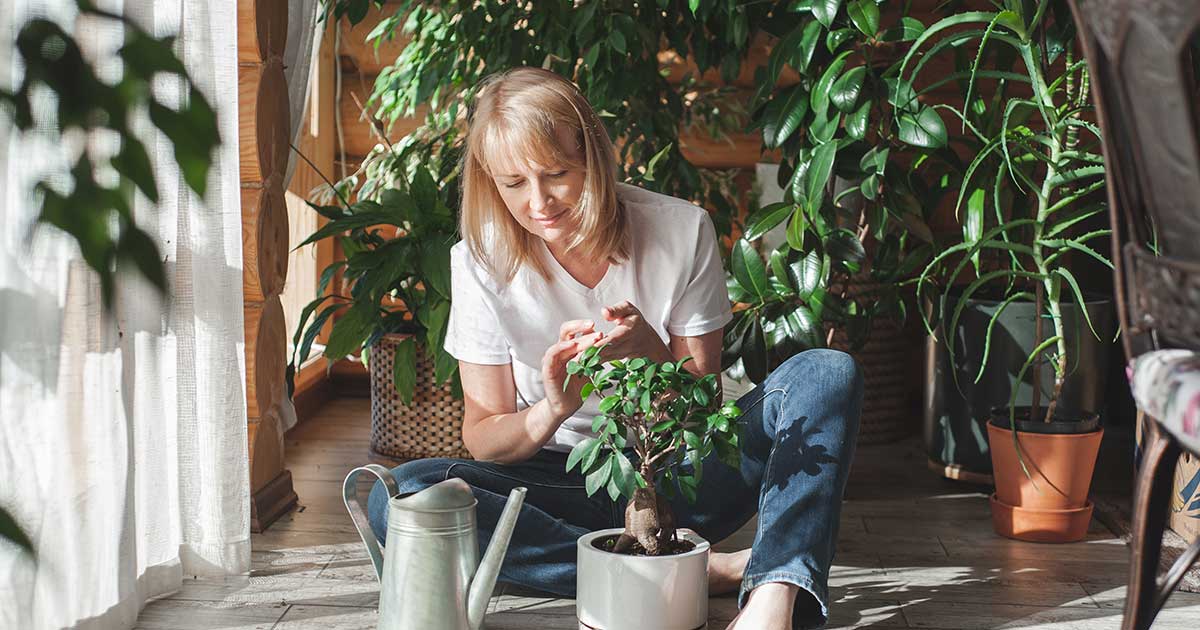How to Grow and Care for Fiddle Leaf Fig Trees
Fiddle leaf fig trees have developed a reputation for being one of the most finicky houseplants around. But if you're thinking of adding a fiddle leaf to your home, don't be deterred. This plant has very definite preferences, but proper care is simple once you understand fiddle leaf figs and their needs. By learning how to grow and care for fiddle leaf fig trees, you can enjoy these statuesque beauties in your home for many years.
- Understanding Fiddle Leaf Fig Basics
- Caring for Fiddle Leaf Fig Trees
- Troubleshooting Fiddle Leaf Fig Problems

Fiddle leaf figs come in many varieties, including variegated types.
Understanding Fiddle Leaf Fig Basics
Fiddle leaf fig trees are native to tropical West African rainforests, where rain, humidity and bright, indirect sunlight abound. Known by the botanical name Ficus lyrata, fiddle leaf figs get their common name from their large, leathery, violin-shaped leaves.
In their native habitat, fiddle leaf fig trees grow up to 100 feet tall.1 Indoors, they can grow as tall as your ceilings allow. Many common varieties top out at 6 to 10 feet tall, growing 1 to 2 feet per year. But if you're short on space, dwarf varieties such as "Bambino" fiddle leaf figs stay 12 inches tall. Most types have glossy green leaves, but variegated fiddle leaf foliage combines green, gray and creamy white.
Fiddle leaf figs are related to rubber plants, weeping figs and the common figs that yield edible fruits. While fiddle leaf figs can produce flowers and fruit, this rarely happens indoors. Like other plants in the Ficus family, fiddle leaf figs don't like change. Introduce all changes gradually, or your fiddle leaf fig may drop its leaves.2

Regular misting provides humidity to help fiddle leaf figs thrive.
Caring for Fiddle Leaf Fig Trees
Understanding where fiddle leaf figs come from gives you a head start on proper care. To keep your fiddle leaf happy, duplicate its natural environment as much as possible.
- Light – Fiddle leaf figs do best in bright, filtered, indirect light. Avoid harsh, direct sunlight, which can leave foliage pale, sunburned or scorched. An east-facing window with bright morning light is ideal.
- Soil – Fiddle leaf figs need consistent water, but they hate soggy soil. Choose a well-draining potting mix that retains moisture yet lets excess water drain freely. Always use a container with unobstructed drainage holes.
- Water – Overwatering and underwatering are quick paths to fiddle leaf fig problems, including root rot from overly wet soil. Always check the soil before watering. When the soil dries out about 2 inches deep, water the plant until water runs through the pot's drainage holes. Reduce watering slightly during winter months when figs rest.
- Fertilizer – Feed your fiddle leaf during active growth from spring through fall. A premium plant food such as Pennington Rejuvenate Plant Food All Purpose 4-4-4 provides your plant with a balanced blend of essential plant nutrients. Natural-based Alaska Fish Fertilizer 5-1-1 complements this foundation with gentle doses of leaf-enhancing nitrogen to keep your fiddle leaf looking its best.
- Temperature and Humidity – Normal home temperatures between 65 to 85 degrees Fahrenheit suit fiddle leaf figs well. Cold temperatures, including air conditioning drafts, can shock your plant. To increase humidity, mist your tree's leaves or place a pebble-filled water saucer under your plant. Add just enough water so the bottom of the pot stays dry.
- Pruning – Late winter is the best time to prune fiddle leaf figs. Prune to maintain shape, control size or remove dead or damaged leaves. Pruning the top or branch tips encourages bushier growth. Fiddle leaf sap can cause allergic reactions, so wear gloves — and keep a towel handy to wipe up drips. Avoid "notching" to encourage branching. Done improperly, cutting notches into your fiddle leaf's trunk can seriously damage your plant.
- Repotting – Plan to repot your fiddle leaf fig every two to three years, when it outgrows its pot.1 Repot in spring, using a container about 2 inches larger in diameter than the current pot. Apply Pennington Plant Starter to reduce transplant shock.
- Propagating – Single fiddle leaf fig leaves will sprout roots if placed in water, but leaves without a piece of stem attached won't grow into trees. Propagate fiddle leaf figs from simple stem cuttings, with a hand from GardenTech RootBoost Rooting Hormone.

Avoid using leaf polish on any plants. Dust leaves gently, or wipe with water instead.
Troubleshooting Fiddle Leaf Fig Problems
Most problems with fiddle leaf fig trees trace back to environmental changes or problems with too much or too little water. You can overcome most problems by adjusting care and conditions.
- Dropping, falling leaves – Abrupt changes in light, temperature, humidity and location can cause fiddle leaf figs to drop their leaves. If your plant dries out completely — or sits in soggy soil — expect falling fiddle leaves. Leaves usually regrow if conditions improve.
- Wilted, dull leaves – Underwatering is usually to blame when rich, glossy fiddle leaf fig leaves wilt and turn dull. Correct watering to prevent leaf loss and restore leaf color and shine.
- Drooping, curling, yellow leaves – Overwatering is the No. 1 offender when leaves droop, curl and yellow. Underwatering is No. 2. Never water automatically. Check your soil by hand or with a moisture meter first.
- Brown leaf margins – Stresses such as overfertilizing, cold temperatures and insufficient humidity turn leaf edges brown — never to be green again. Trim away brown edges with a sharp pair of garden scissors, following the natural leaf shape, or remove the leaf.
- Fiddle leaf fig toxicity – If ingested, fiddle leaf fig trees are toxic to dogs, cats and humans. In addition, many people have allergic reactions to the sap. Train kids and pets so they understand not to eat or play with these plants.
By learning how to grow and care for fiddle leaf fig trees, you can enjoy these striking plants in your home for years to come. At Pennington, we're committed to bringing you the finest in plant care products and timely expert tips. From garden vegetables to snake plants, we're here to help you succeed.
Always read product labels thoroughly and follow instructions.
Sources:
1. Missouri Botanical Garden, "Ficus Lyrata."
2. S. Appell, "Gods and Monsters: The Genus Ficus," Brooklyn Botanic Garden.





